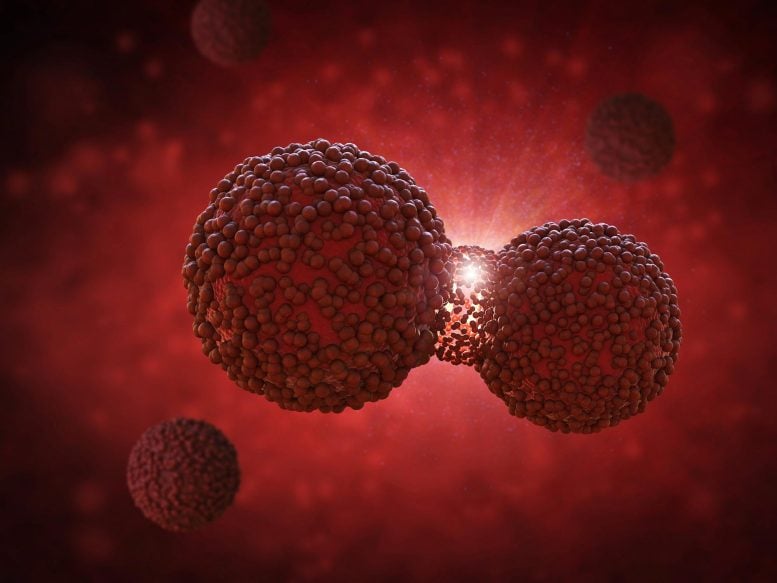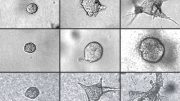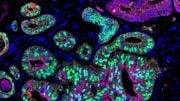
As of 2022, it is estimated that over 600,000 people die of cancer each year in the United States.
A multi-gene expression signature in tumors is associated with aggressive disease and poor patient outcomes, and it has the potential to become a genetic cancer biomarker.
The human cell’s primary source of energy, the mitochondria plays an important role in the metabolism of cancer cells. In a study recently published in PLOS ONE, researchers from throughout the world, including Dario C. Altieri, M.D., president and chief executive officer, director of the Ellen and Ronald Caplan Cancer Center, and Robert and Penny Fox Distinguished Professor at The Wistar Institute, have identified a particular gene signature indicative of mitochondrial reprogramming in tumors that is associated with a poor patient outcome.
“To the best of our knowledge, this is the first time that a gene signature of mitochondrial dysfunction is linked to aggressive cancer subtypes, treatment resistance, and, unfortunately, low patient survival rates. Although our work has focused on the mitochondrial protein Mic60 in this response, we know that dysfunctional mitochondria are commonly generated during tumor growth, suggesting that this is a general trait in cancer,” says Altieri.
This study was inspired by earlier work examining the role of the protein Mic60 in the proliferation, motility, and metastasis of tumor cells. Mic60, also known as mitofilin or inner membrane mitochondrial protein (IMMT), is a key protein that is required for mitochondrial structure and therefore has an impact on mitochondrial functions and tumor metabolism.
Andrew Kossenkov, Ph.D., first author on the paper, assistant professor in Wistar’s Gene Expression and Regulation program, and scientific director of the Institute’s Bioinformatics Facility, shares, “After original findings on the strong association of Mic60 in low levels in cancer tissues, we were curious if we could identify a small panel of Mic60 downstream genes of specific functions and if the Mic60-low gene panel signature has clinical relevance – i.e. if it is associated with clinical data like survival, cancer sub-types, response to treatment, etc. – and we did.”
Armed with this knowledge, the team – along with collaborators from Canada, Italy, and across the United States – analyzed tumor cells from three independent patient cohorts with pancreatic ductal adenocarcinoma (PDAC). They showed that an 11-gene Mic60-low signature is associated with aggressive disease, local inflammation, treatment failure, and shortened survival – ultimately demonstrating the clinical relevance of protein. Therefore, the Mic60-low gene signature may be used as a simple tool or biomarker to estimate the cancer risk for PDAC and potentially other types of cancer, including glioblastoma.
“Gene signatures can be used to gain insight into specific tumor qualities,” Kossenkov explains. “If extensively developed, tested, and validated, this [Mic60-low gene signature] can be a potential simple point-of-service molecular tool for pancreatic cancer prognosis or stratification of patient risks and prediction of treatment response.”
“While the broad applicability of this new Mic60-low gene signature certainly awaits further confirmation in larger patient populations, we hope that this simple, easily implementable molecular tool will be of help in the clinic to stratify patients at higher risk of severe and progressive disease,” Altieri details.
Regarding future directions, Kossenkov suggests that studying broader datasets with extensive clinical information not limited to pancreatic cancer, but also other malignancies can help demonstrate the applicability of the 11gene Mic60-low signature in estimating cancer risks.
Reference: “Mitochondrial fitness and cancer risk” by Andrew V. Kossenkov, Andrew Milcarek, Faiyaz Notta, Gun-Ho Jang, Julie M. Wilson, Steven Gallinger, Daniel Cui Zhou, Li Ding, Jagadish C. Ghosh, Michela Perego, Annamaria Morotti, Marco Locatelli, Marie E. Robert, Valentina Vaira and Dario C. Altieri, 12 October 2022, PLOS ONE.
DOI: 10.1371/journal.pone.0273520
The study was funded by the National Institutes of Health and the Government of Ontario.










I’ll Find it Very Worthfull The Information Keep Up With The Good Work.
I know Joe Biden said he personally would cure cancer to I’m sure this cure will happen in the next 2 years so he can claim responsibility.
The progression of cancer and it’s metastatic behavior is a dthing that is deleterious to humanity.
Everyday we find more ways to diagnose and see that your gonna get cancer. No fixing it or preventing just letting you know what’s already gonna happen. Welcome 😘 that helps right
It’ll be decades before any of this translates into cancer cures. Meanwhile, most cancers are preventable with lifestyle changes (plant based diet and regular exercise).
I wish someone would mention Lynch Syndrome as an inherited decease to acquaint people to be aware of it.
I had cancer 45+ years ago. Test study of 500 children and to my knowledge I was one to survive. I never believed I had it. Not once. I broke every rule they gave me. Mind over matter.The chemo they gave me are used in a different way today.